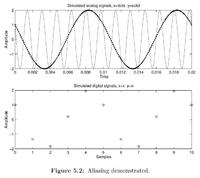cafukarfoo
Full Member level 3
matlab alias
Hello Sir/Madam,
If filter fstop > fs/2, i should see alias.
How can i simulate this alias in matlab? Can anyone give some suggestion here?
Thanks.
Hello Sir/Madam,
If filter fstop > fs/2, i should see alias.
How can i simulate this alias in matlab? Can anyone give some suggestion here?
Thanks.
